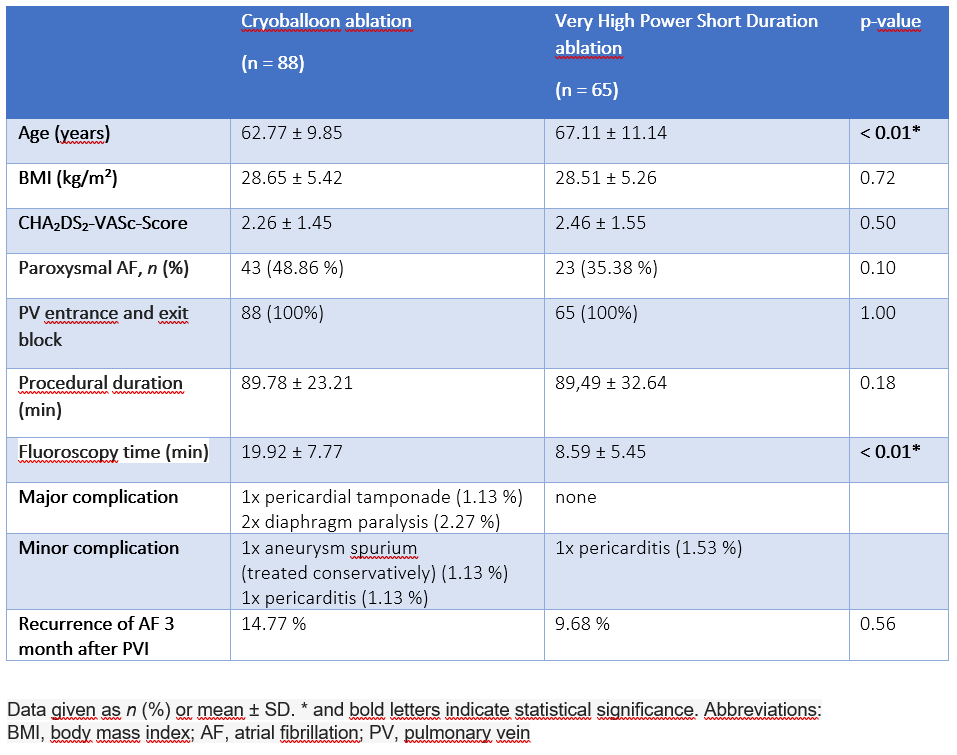Background: Very High-Power Short-Duration (vHPSD) ablation, utilizing 90W for 4 seconds with the QDOT MICRO™ Catheter (Biosense Webster, Diamond Bar, CA, USA), is a novel radiofrequency ablation technique for performing pulmonary vein isolation (PVI) in patients with atrial fibrillation (AF). Employing higher energy for shorter intervals potentially reduces the procedure times of radiofrequency ablation compared to single-shot systems, simultaneously offering an option for extra-pulmonary vein substrate mapping and ablation.
Objective: The study's objective was to compare procedure times, fluoroscopy durations, complication rates, and short-term efficacy after 3 months between patients undergoing their first ablation for AF with vHPSD (90W/4s) or cryoballoon.
Methods: 153 consecutive patients with AF receiving first PVI at our center from 2019 to 2023 were studied. The cryoballoon procedure (n=88) was compared with a vHPSD protocol of 90W for 4 seconds (n=65). In case of severe fibrotic substrate additional ablation lines were placed in the vHPSD group, and cavotricuspid isthmus ablation was performed if atrial flutter was detected in the vHPSD group.
Results: Cryoballoon ablation patients were younger than those in the vHPSD group, but other baseline characteristics were similar. The mean procedure time did not show a significant difference between the groups (Cryo 89.78 min vs. vHPSD 88.49 min, p=0.18); however, the fluoroscopy time was significantly shorter in the vHPSD group (Cryo 19.92 min vs. vHPSD 8.59 min, p<0.01). Entry and exit block were achieved in all patients. We observed one pericardial tamponade requiring intervention (1.13%) and 2 cases of diaphragm paralysis (2.27%) and one aneurysm spurium (1.13%) not requiring intervention in the Cryo group. There was one case of post-interventional pericarditis in each group (Cryo 1.13%, vHPSD: 1.53%). Recurrence rates after 3 months did not significantly differ between the groups (Cryo 14.77% and vHPSD 9.68%, p=0.56).
Conclusions: Very-high-power short-duration ablation using 90W for 4 seconds demonstrates lower fluoroscopy times with comparable procedure times and short term recurrence rate, with low complication rates compared to cryoballoon ablation.

https://dgk.org/kongress_programme/ht2023/aV94.html